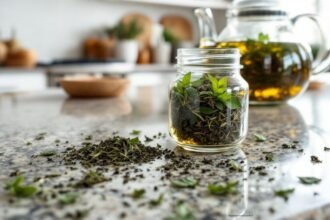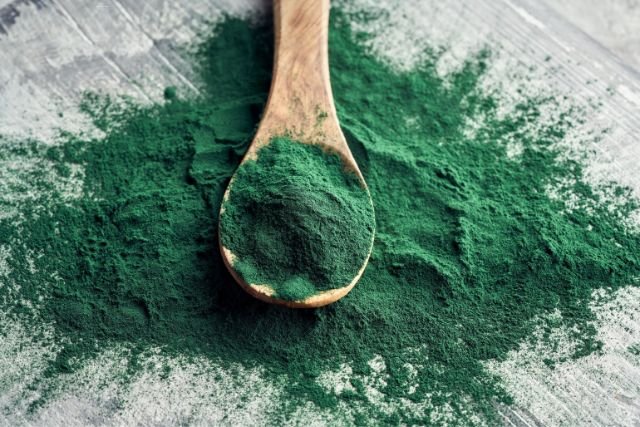Life with fibromyalgia is tough, but did you know your diet could be a game-changer? Understanding how what you eat influences your symptoms can make all the difference. In this article, we’ll dive into the best and worst foods for fibro nutrition, backed by the latest research. Plus, we’ll reveal fresh strategies to help you take control of your diet and start thriving today.
The Fibromyalgia-Diet Connection: What’s New
Recent studies have shed light on the crucial role gut health plays in fibromyalgia symptoms. Researchers now believe that an imbalance in gut microbes may contribute to the condition’s painful symptoms. This discovery opens exciting possibilities for managing fibromyalgia through dietary interventions.
Foods That Fight Fibromyalgia: Your Grocery List
1. Dark Leafy Greens: Nature’s Pain-Fighters
Spinach, kale, and Swiss chard are packed with antioxidants that combat inflammation and reduce pain sensitivity. These nutrient powerhouses should be at the top of your shopping list.
2. Fatty Fish: Omega-3 Superheroes
Salmon, sardines, and mackerel are rich in omega-3 fatty acids, which have potent anti-inflammatory properties. Aim to include these in your meals at least twice a week.
3. Colorful Berries: Antioxidant Bonanza
Blueberries, strawberries, and raspberries are bursting with antioxidants that help reduce oxidative stress in the body. Snack on these delicious fruits or add them to your morning smoothie.
4. Turmeric: The Golden Spice
This vibrant spice contains curcumin, a compound with powerful anti-inflammatory effects. Sprinkle it on roasted vegetables or try a comforting golden milk latte.
5. Probiotic-Rich Foods: Gut Health Boosters
Yogurt, kefir, and sauerkraut introduce beneficial bacteria to your gut, potentially alleviating fibromyalgia symptoms. Include these fermented foods in your daily diet for optimal gut health.
6. Bone Broth: Liquid Gold
Packed with collagen and amino acids, bone broth supports gut healing and may reduce joint pain. Sip on this nourishing broth or use it as a base for soups and stews.
Foods to Avoid: The Fibromyalgia Blacklist
1. Refined Sugar: The Sweet Saboteur
Sugar fuels inflammation and can exacerbate pain and fatigue. Steer clear of sugary treats and opt for natural sweeteners like stevia or monk fruit in moderation.
2. Processed Foods: The Convenience Trap
These foods often contain additives and preservatives that may trigger fibromyalgia flare-ups. Choose whole, unprocessed foods whenever possible.
3. Gluten: The Controversial Grain
Many fibromyalgia patients report improved symptoms after eliminating gluten. Consider a trial elimination to see if it benefits you.
4. Artificial Sweeteners: Hidden Troublemakers
Aspartame and other artificial sweeteners may worsen fibromyalgia symptoms. Read labels carefully and choose natural alternatives.
5. Excessive Caffeine: The Double-Edged Sword
While a cup of coffee might provide a temporary energy boost, too much caffeine can disrupt sleep and increase pain sensitivity. Limit your intake and opt for herbal teas instead.
Thriving with Fibromyalgia: Diet Strategies
Embrace the Mediterranean Diet
This eating pattern, rich in fruits, vegetables, whole grains, and healthy fats, has shown promise in reducing fibromyalgia symptoms. It’s not just a diet; it’s a delicious lifestyle change.
Experiment with Intermittent Fasting
Some fibromyalgia patients report benefits from intermittent fasting, which may help reduce inflammation and improve energy levels. Consult your healthcare provider before trying this approach.
Hydrate, Hydrate, Hydrate
Proper hydration is crucial for managing fibromyalgia symptoms. Aim for at least 8 glasses of water daily and consider infusing your water with fresh fruits for added flavor and nutrients.
Mindful Eating: Listen to Your Body
Pay attention to how different foods affect your symptoms. Keep a food diary to identify potential triggers and patterns. Your body is unique, and what works for others may not work for you.
Meal Prep for Success
On good days, prepare and freeze fibromyalgia-friendly meals. This ensures you have nutritious options readily available when fatigue or pain strikes.
The Power of Supplements
While a balanced diet should be your primary focus, certain supplements may offer additional support:
Vitamin D: The Sunshine Vitamin
Low vitamin D levels are common in fibromyalgia patients. Consider getting your levels checked and supplementing them if necessary.
Magnesium: The Relaxation Mineral
This mineral may help reduce muscle tension and improve sleep quality. Speak with your healthcare provider about the appropriate dosage for you.
Coenzyme Q10: The Energy Booster
Some studies suggest that CoQ10 supplementation may improve energy levels and reduce pain in fibromyalgia patients. Always consult your doctor before starting any new supplement regimen.
Beyond Diet: Holistic Approaches
While diet plays a crucial role in managing fibromyalgia, a holistic approach yields the best results:
Gentle Exercise: Move Your Way to Relief
Low-impact activities like yoga, tai chi, or swimming can help reduce pain and improve flexibility. Start slowly and listen to your body.
Stress Management: Your Secret Weapon
Chronic stress can exacerbate fibromyalgia symptoms. Explore stress-reduction techniques like meditation, deep breathing, or journaling.
Quality Sleep: The Ultimate Healer
Prioritize good sleep hygiene by maintaining a consistent sleep schedule and creating a relaxing bedtime routine.
Empowering Your Fibromyalgia Journey
Understanding the impact of diet on fibromyalgia is a powerful tool in your wellness arsenal. By making informed choices about what you eat, you’re taking control of your health and paving the way for better days ahead.
Remember, everyone’s experience with fibromyalgia is unique. Be patient with yourself as you explore different dietary approaches, and don’t hesitate to seek support from healthcare professionals or support groups.
Stay curious and open to new research and developments in fibromyalgia management. Your journey to better health is ongoing, and with the right tools and knowledge, you can face each day with renewed hope and energy.
Here’s to a year of discovery, healing, and thriving with fibromyalgia. Your plate is not just filled with food; it’s filled with possibilities for a better, more vibrant life.










